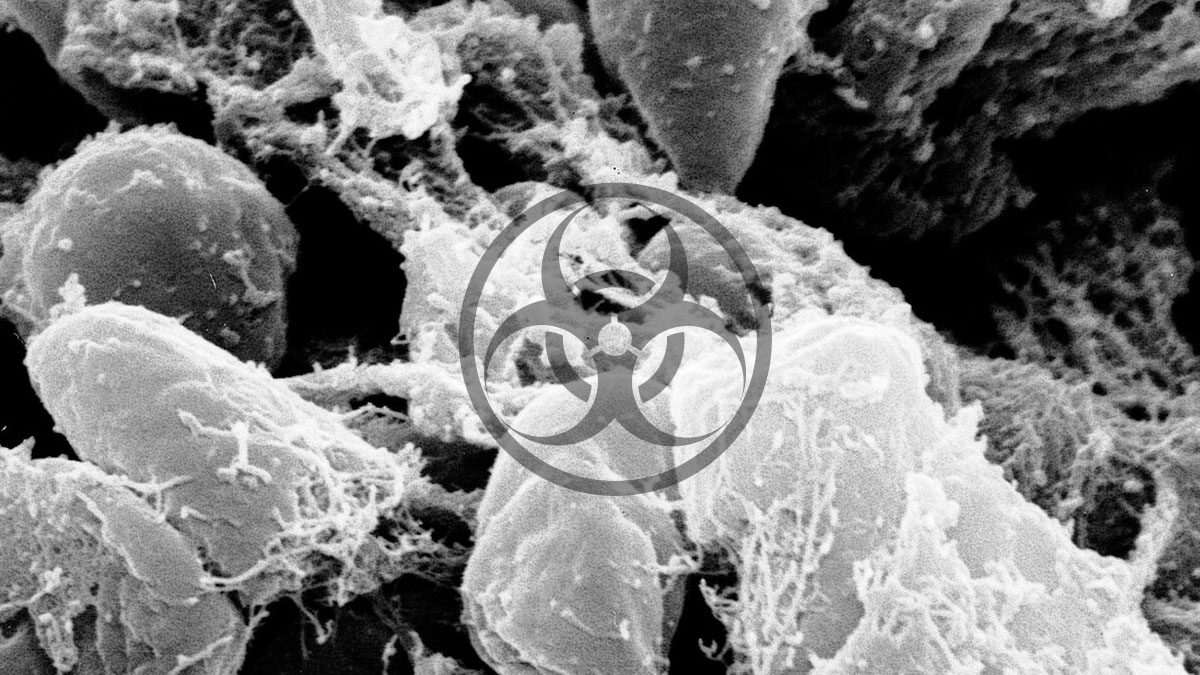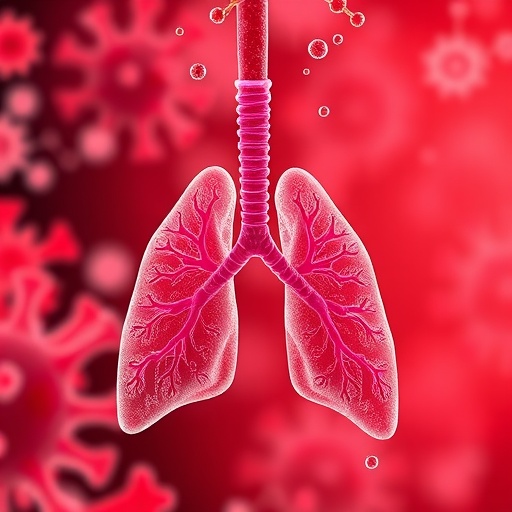NATO and FLI Lead International Workshop on Zoonotic and Bioterrorism Threats – Global Biodefense

International Workshop Report: Zoonotic Disease Control and Biosecurity in the Euro-MENA Region
Executive Summary
In mid-September 2025, the Friedrich-Loeffler-Institut (FLI) in Jena, Germany, hosted the NATO-supported Advanced Research Workshop, “Update on Bacterial Biological Agents in the Euro-MENA Region and their Implications for Bioterrorism.” The workshop convened experts from 19 nations across Europe, the Middle East, and North Africa to address critical challenges in zoonotic disease control and biosecurity. The event’s objectives and outcomes directly support several United Nations Sustainable Development Goals (SDGs), primarily SDG 3 (Good Health and Well-being), SDG 16 (Peace, Justice and Strong Institutions), and SDG 17 (Partnerships for the Goals).
Advancing Global Health Security and Well-being (SDG 3)
Addressing High-Threat Zoonotic Pathogens
The workshop focused on enhancing regional capacity to combat infectious diseases, a core target of SDG 3. Discussions centered on bacterial agents that pose significant threats to both animal and human health. Key pathogens included:
- Anthrax
- Brucellosis
- Plague
- Tularemia
- Q fever
- Glanders
- Listeriosis
By addressing these endemic and potentially epidemic diseases, the initiative contributes directly to SDG Target 3.3, which aims to end the epidemics of communicable diseases. The emphasis on improving surveillance, early detection, and response mechanisms aligns with SDG Target 3.d, strengthening country capacities for managing national and global health risks.
The One Health Approach for Sustainable Health Systems
A central theme was the adoption of the One Health approach, an integrated framework essential for achieving sustainable health outcomes. Participants identified key risk factors at the human-animal-environment interface, such as unsafe slaughtering and poor carcass disposal. The development of multi-sectoral strategies to mitigate these risks underscores a holistic commitment to protecting public health and ensuring the well-being of communities.
Fostering Peace, Justice and Strong Institutions (SDG 16)
Mitigating Bioterrorism Risks
The workshop directly addressed threats to peace and security by examining the potential for bacterial agents to be used for bioterrorism. This focus supports SDG 16 by promoting strategies to prevent violence and strengthen security. Discussions highlighted the dual-use nature of certain biological research, reinforcing the need for responsible scientific oversight and international cooperation to prevent the misuse of pathogens.
Strengthening Institutional Capacity and Data Sharing
A significant challenge identified was the disparity in epidemiological data availability between European and MENA regions. The call for enhanced surveillance and data-sharing frameworks is a crucial step toward building effective and accountable institutions (SDG Target 16.6). Transparent data exchange is fundamental for understanding disease transmission, coordinating responses, and building trust between nations, thereby reinforcing regional stability.
Strengthening Global Partnerships for Sustainable Development (SDG 17)
A Multi-Regional Collaborative Platform
The workshop exemplified SDG 17 by creating a robust partnership between NATO, the FLI, and experts from 19 member and partner nations. This North-South and South-South cooperation facilitated the exchange of scientific knowledge, technology, and best practices. With over 28 speakers from diverse fields, the event served as a critical bridge between regions facing shared biosecurity challenges.
Commitments for Future Action
The workshop concluded with a firm commitment to strengthening this multi-stakeholder partnership. The primary outcomes are designed to build a sustainable and resilient framework for future collaboration, directly supporting the implementation of the SDGs.
- Establish a Sustainable Expert Network: A network connecting scientists and security experts across Europe, Asia, and Africa will be established to ensure continuous knowledge sharing and rapid response coordination.
- Pursue Joint Research Projects: Participants agreed to initiate new collaborative research projects to accelerate the development of treatments and harmonize laboratory diagnostics.
- Enhance Regional Biosurveillance: The partnership will focus on building capacity for improved biosurveillance in regions vulnerable to natural outbreaks and intentional biological threats.
These forward-looking actions demonstrate a collective resolve to leverage scientific cooperation as a primary defense against transboundary biological risks, thereby safeguarding global health and fortifying international security in line with the 2030 Agenda for Sustainable Development.
Analysis of Sustainable Development Goals in the Article
1. Which SDGs are addressed or connected to the issues highlighted in the article?
-
SDG 3: Good Health and Well-being
- The article’s primary focus is on public health threats posed by bacterial zoonoses such as anthrax, plague, and brucellosis. It discusses the need to control these infectious diseases, which directly aligns with ensuring healthy lives and promoting well-being.
-
SDG 16: Peace, Justice and Strong Institutions
- The article addresses the security implications of bacterial agents, specifically their potential use for bioterrorism. The workshop, supported by NATO’s “Science for Peace and Security Programme,” aims to strengthen institutional capacity to prevent and respond to such threats, contributing to peaceful and secure societies.
-
SDG 17: Partnerships for the Goals
- The entire initiative described in the article is a testament to international partnership. It details a collaborative workshop involving experts and officials from 19 countries across Europe, the Middle East, and North Africa, aiming to build a “sustainable expert network” and pursue “joint research projects” to tackle shared challenges.
2. What specific targets under those SDGs can be identified based on the article’s content?
-
Under SDG 3: Good Health and Well-being
- Target 3.3: By 2030, end the epidemics of AIDS, tuberculosis, malaria and neglected tropical diseases and combat hepatitis, water-borne diseases and other communicable diseases. The article directly addresses this by focusing on combating communicable bacterial zoonoses like “anthrax, brucellosis, plague, tularemia, Q fever, glanders, and listeriosis.”
- Target 3.d: Strengthen the capacity of all countries, in particular developing countries, for early warning, risk reduction and management of national and global health risks. The call for “enhanced surveillance and data-sharing frameworks” and the Friedrich-Loeffler-Institut’s role in strengthening “early detection, diagnostics, and response capacity” are direct efforts towards this target.
-
Under SDG 16: Peace, Justice and Strong Institutions
- Target 16.a: Strengthen relevant national institutions, including through international cooperation, to build capacity at all levels, in particular in developing countries, to prevent violence and combat terrorism and crime. The NATO-supported workshop is an example of international cooperation aimed at building capacity to manage and prevent the threat of bioterrorism, which is a specific form of terrorism and violence.
-
Under SDG 17: Partnerships for the Goals
- Target 17.6: Enhance North-South, South-South and triangular regional and international cooperation on and access to science, technology and innovation and enhance knowledge sharing. The workshop served as a “platform to exchange cutting-edge knowledge” among 19 countries and aimed to establish a network for continued scientific cooperation and data sharing.
- Target 17.9: Enhance international support for implementing effective and targeted capacity-building in developing countries. The workshop itself is a capacity-building exercise, bringing together experts to “improve regional preparedness” and “harmonizing laboratory diagnostics.”
- Target 17.16: Enhance the global partnership for sustainable development, complemented by multi-stakeholder partnerships that mobilize and share knowledge, expertise, technology and financial resources. The event brought together “officials and experts” from diverse fields like “microbiology, veterinary science, and security policy,” representing a multi-stakeholder partnership to address a global challenge.
3. Are there any indicators mentioned or implied in the article that can be used to measure progress towards the identified targets?
-
For SDG 3 Targets:
- Incidence of specific zoonotic diseases: The article lists several diseases (anthrax, plague, etc.). Tracking the prevalence and incidence of these diseases in the Euro-MENA region would be a direct indicator of progress under Target 3.3.
- Functionality of surveillance and data-sharing frameworks: The call for “enhanced surveillance and data-sharing frameworks” implies that the establishment and operational effectiveness of such systems can be used as an indicator for Target 3.d.
- National laboratory and diagnostic capacity: The mention of high-containment laboratories (BSL-4) and the goal of “harmonizing laboratory diagnostics” suggest that the number of accredited labs and the standardization of diagnostic procedures are measurable indicators of health security capacity (Target 3.d).
-
For SDG 16 Targets:
- Number of international cooperative initiatives on biosecurity: The workshop itself is an example. Progress towards Target 16.a could be measured by the number of similar workshops, joint training exercises, or established protocols aimed at preventing bioterrorism.
-
For SDG 17 Targets:
- Number of joint scientific research projects: The commitment to “pursue new joint research projects” provides a clear, measurable indicator of scientific cooperation under Target 17.6.
- Establishment and membership of expert networks: The goal to “establish a sustainable expert network” is a concrete outcome that can be tracked as an indicator for Targets 17.6 and 17.9.
- Number of countries and stakeholders participating in partnerships: The article explicitly states that “19 countries” and experts from “microbiology, veterinary science, and security policy” participated. This serves as a direct indicator for multi-stakeholder partnerships under Target 17.16.
4. Table of SDGs, Targets, and Indicators
| SDGs | Targets | Indicators Identified in the Article |
|---|---|---|
| SDG 3: Good Health and Well-being |
3.3: End epidemics of communicable diseases.
3.d: Strengthen capacity for early warning and management of global health risks. |
– Incidence of specific zoonotic diseases mentioned (anthrax, plague, etc.). – Establishment and functionality of joint surveillance and data-sharing frameworks. – Harmonization of laboratory diagnostics and response capacity. |
| SDG 16: Peace, Justice and Strong Institutions | 16.a: Strengthen national institutions through international cooperation to prevent violence and combat terrorism. | – Number of international cooperative initiatives (e.g., workshops, joint projects) aimed at preventing bioterrorism. |
| SDG 17: Partnerships for the Goals |
17.6: Enhance international cooperation on and access to science, technology, and innovation.
17.9: Enhance international support for capacity-building. 17.16: Enhance the global partnership for sustainable development. |
– Number of joint research projects pursued. – Establishment and active membership of a sustainable expert network. – Number of countries (19 mentioned) and diverse stakeholders participating in collaborative events. |
Source: globalbiodefense.com
What is Your Reaction?
 Like
0
Like
0
 Dislike
0
Dislike
0
 Love
0
Love
0
 Funny
0
Funny
0
 Angry
0
Angry
0
 Sad
0
Sad
0
 Wow
0
Wow
0

















































:focal(1500,1000)/https://media.globalcitizen.org/a6/9a/a69a4720-d8a1-4715-b596-18738d03c05c/rotary_polio_hero_image.jpg?#)






/countries/sri-lanka/photo-credit---dmc-sri-lanka.tmb-1200v.jpg?sfvrsn=dc298bcc_1#)


















